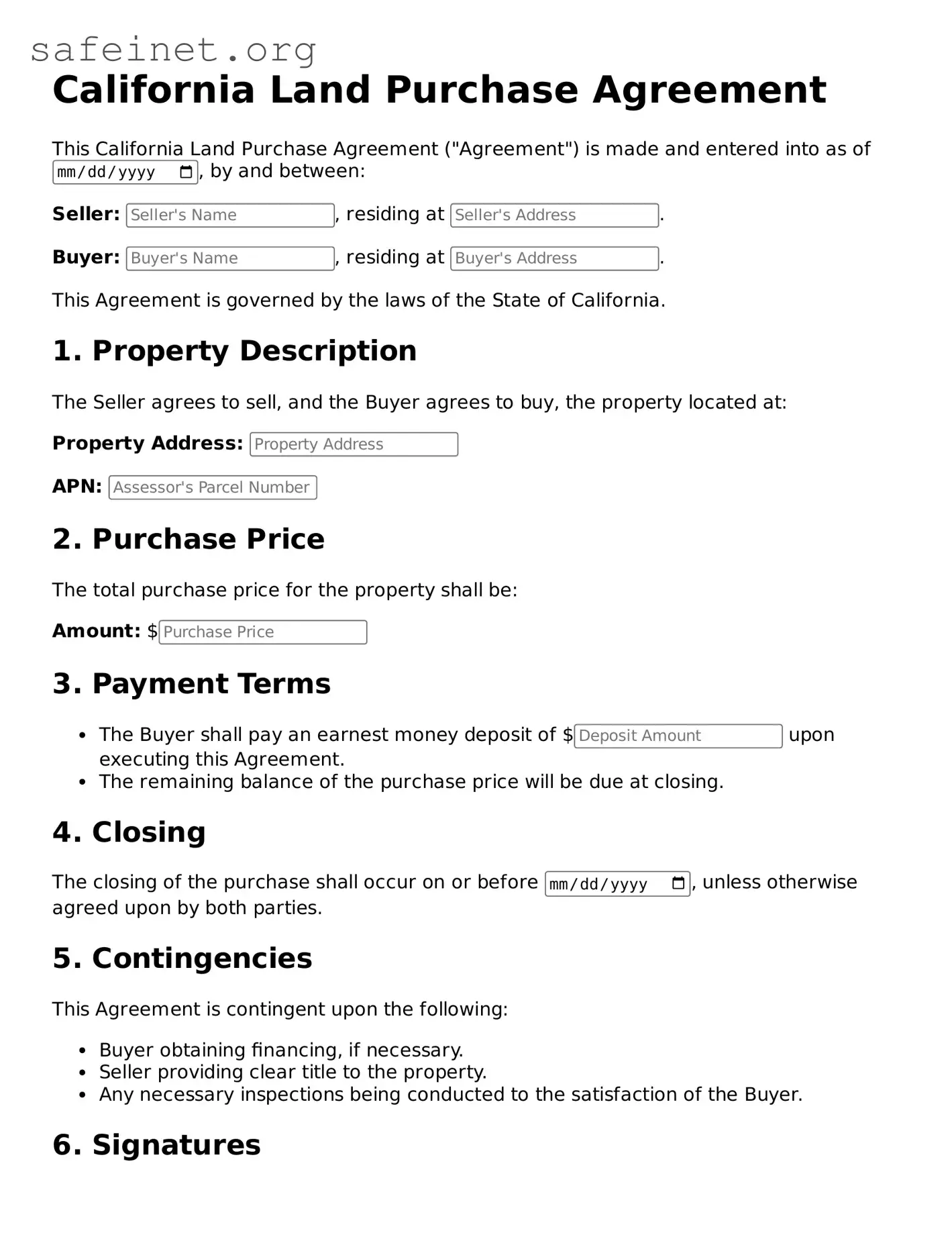Valid Land Purchase Agreement Template for the State of California
The California Land Purchase Agreement form serves as a crucial legal document that outlines the terms and conditions under which real estate is bought and sold in California. This form protects the interests of both buyers and sellers, ensuring that each party is aware of their rights and obligations. Understanding how to properly fill out this form can streamline the transaction process and avoid potential disputes.
To start your property purchase journey, fill out the form by clicking the button below.
